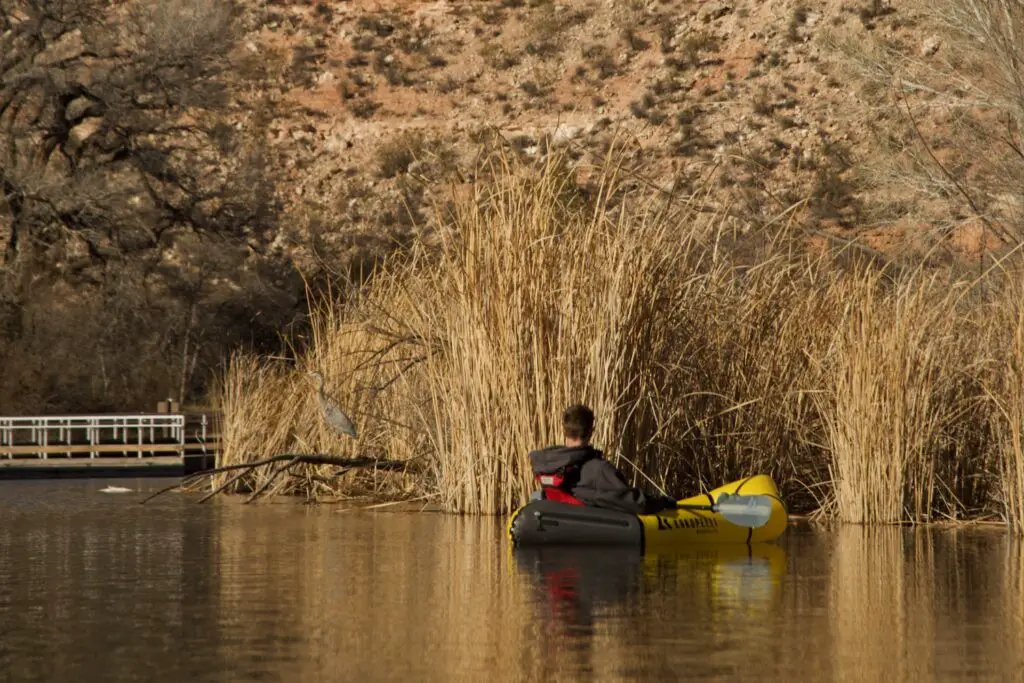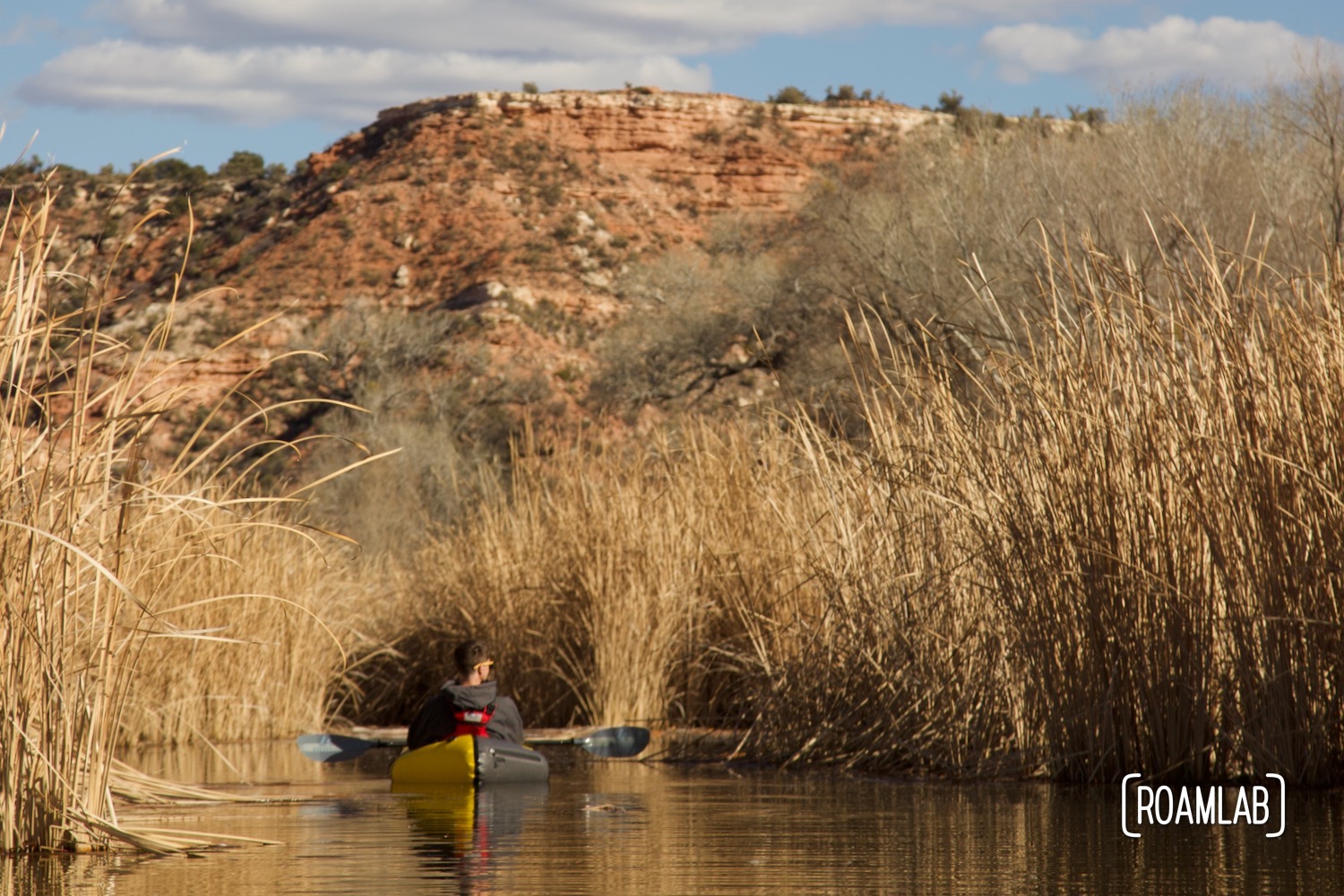The plan was to paddle Oak Creek, a scenic waterway that threads through the heart of Sedona. We’d paddle under gnarly oaks past red rock vortexes. It looked amazing in my research. Unfortunately, we arrive in the wake of extensive precipitation augmented by snowmelt. When I check my plans with a local park ranger, she gently asks about my experience level. I’m not going to lie. It’s nowhere near a level that I would do something risky. But what else, then? We came to paddle. But every river and creek in the area is dangerously swollen. A volunteer sidles up, “What about Dead Horse Ranch State Park?”
Dead Horse Ranch State Park is not in Sedona, but it isn’t that far of a drive, either. It probably came to mind because part of the park’s border is defined by the Verde River, a popular rafting destination. While the Verde is unsafe to paddle for the same seasonal reasons as Oak Creek, the park also has three ponds where we could paddle. I don’t know what I was expecting in terms of size. They did say ponds, but it’s hard to judge scale with cartoonishly drawn park maps. What seals the deal is that the park also has camping. It settles our question of where to paddle and spend the night with one answer. So we turn west for Dead Horse Ranch State Park.
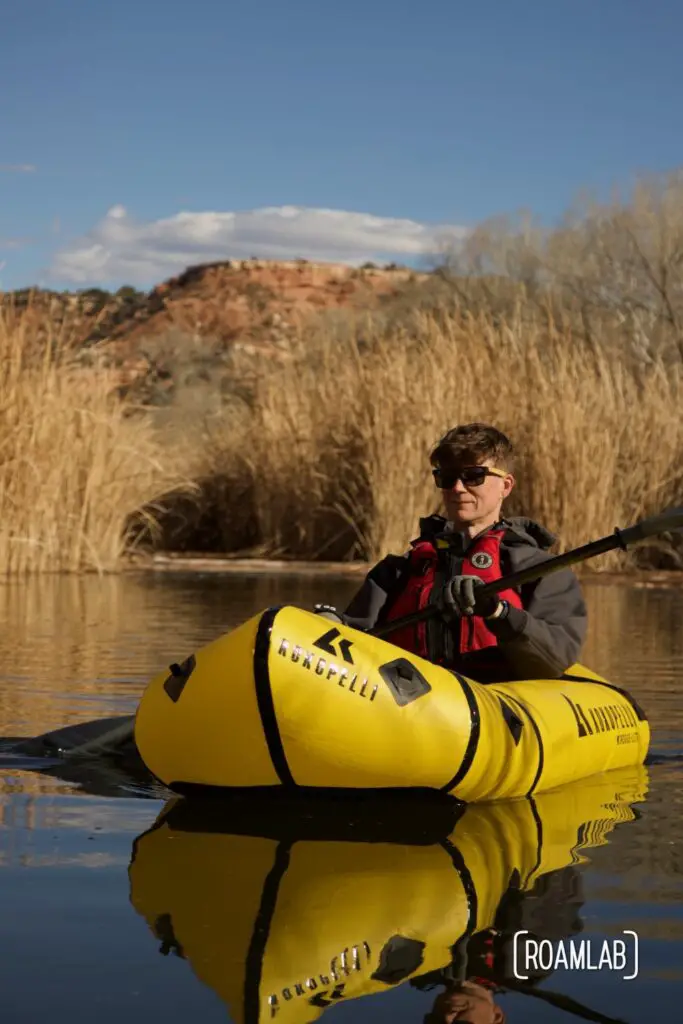
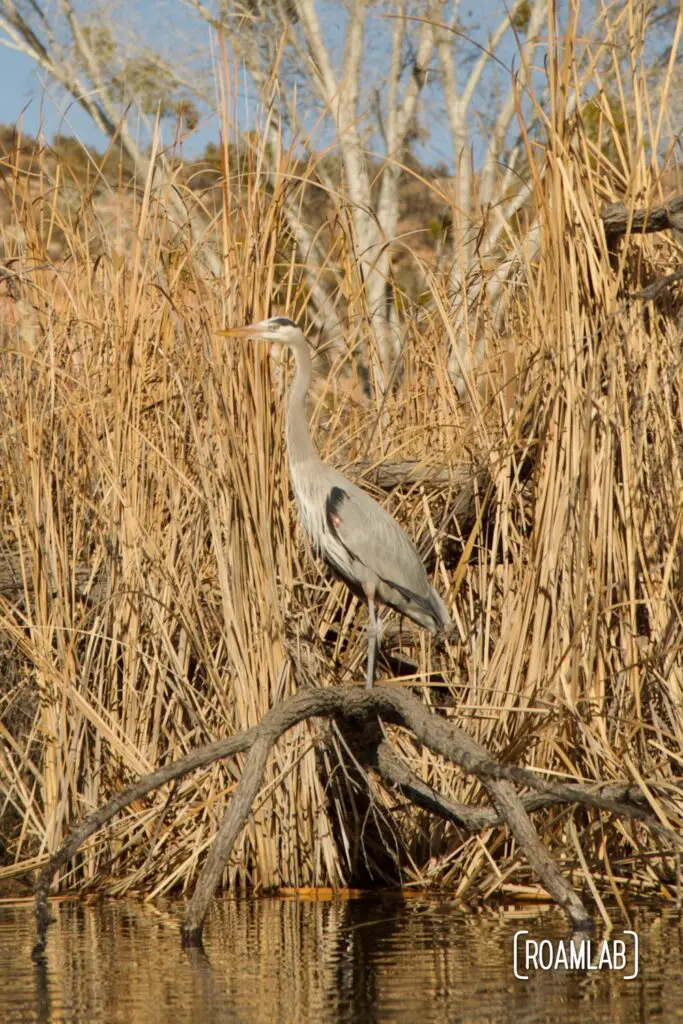
About Dead Horse Ranch State Park
Dead Horse Ranch State Park is a beautiful park located in Cottonwood, Arizona, featuring trails, camping facilities, picnic areas, fishing piers, and other recreational activities. The park covers 423 acres along the Verde River and offers a variety of habitats, including riparian zones, grasslands, and mesquite bosques.
The history of Dead Horse Ranch State Park dates back to the mid-20th century when it was a working cattle ranch owned by the Ireys family. In the 1940s, this family from Minnesota came to Arizona looking for a suitable ranch to purchase. They visited several ranches, including the one that would later become Dead Horse Ranch State Park. When they asked their children which ranch they liked best, they referred to this one as the “dead horse ranch,” as they had seen a dead horse on the property during their visit. The name stuck, and the Ireys family decided to purchase the property in 1950.
For several decades, the Ireys family lived on and operated the ranch. In the 1970s, as the family started considering the future of the property, they decided that they wanted to preserve the land for future generations to enjoy. In 1971, the family approached the Arizona State Parks Board with the idea of selling the property to the state to be converted into a state park.
After a period of negotiation and planning, the Arizona State Parks Board purchased 286 acres of the ranch in 1973. The park officially opened to the public on June 1, 1977. Its name was kept as Dead Horse Ranch State Park in honor of the Ireys family and the story behind the name. Since then, the park has expanded in size, and it now encompasses 423 acres of diverse habitat.
Today, Dead Horse Ranch State Park is a popular destination for outdoor enthusiasts, offering activities such as hiking, mountain biking, horseback riding, fishing, canoeing, kayaking, and birdwatching. The park also features camping facilities, picnic areas, and a playground, making it a great place for families to enjoy the natural beauty of the Verde Valley in Arizona.
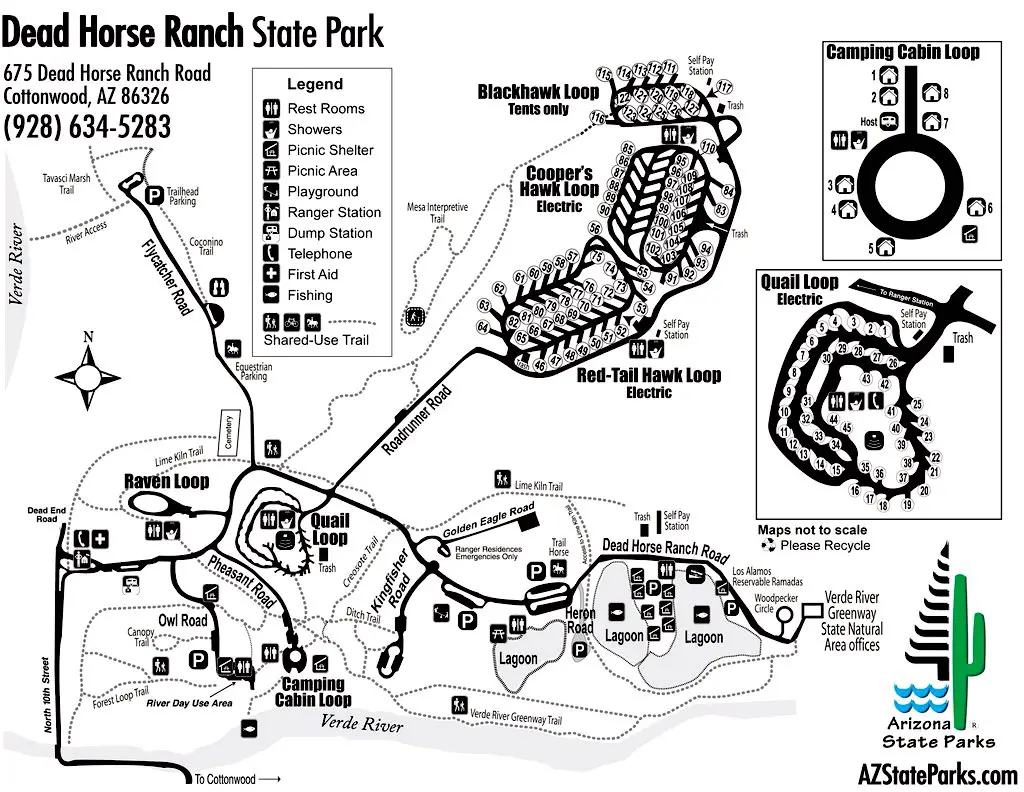
Paddling Dead Horse Ranch State Park
When the question of paddling Dead Horse Ranch floats into a conversation, the first obvious option is Verde River. In this region, the Verde River offers everything from challenging whitewater for the experienced rafter to leisurely currents for the casual canoer. We can lose ourselves in the thrill of rough water or experience a scenic environment with opportunities to observe wildlife and the lush riparian habitat along the Verde’s banks.
That said, Dead Horse Ranch is not one of the primary put-in or take-out points for paddling. The Verday carves out part of the park’s border and contributes to the scenic views. But most of the popular paddling is outside the park. Rangers in the park will helpfully identify options best suited for your interests.
There are no canoe or raft rentals available within the park itself, but several outfitters in the nearby area offer rentals and shuttle services.
Please note: that water levels can vary throughout the year, so it’s essential to check the current conditions before planning a canoeing or rafting trip. You can contact the park or local outfitters for updated information on water levels and conditions. Also, always follow safety guidelines and wear appropriate personal flotation devices while on the water.
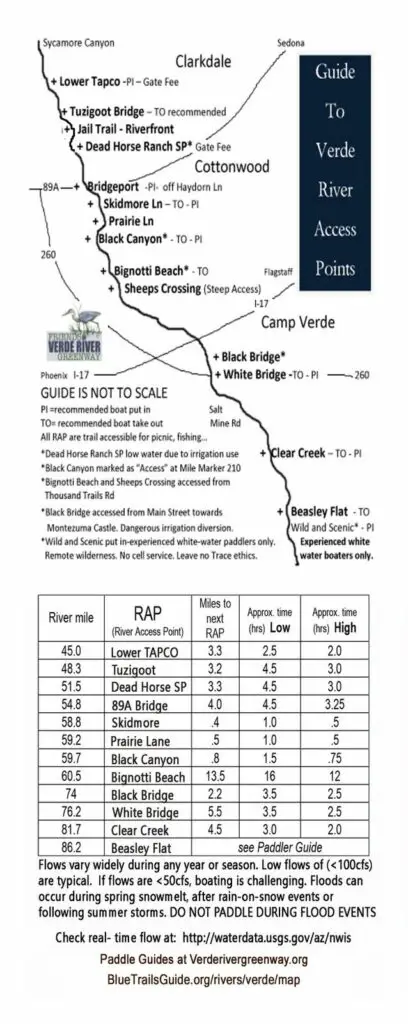
Rattlesnake, Blackhawk, and Mesquite Ponds
But of course, we are visiting the park when the water levels prevent us from paddling the Verde. Fortunately, we can also paddle on the ponds within Dead Horse Ranch State Park. The park features three lagoons or ponds: Rattlesnake, Blackhawk, and Mesquite. These ponds are stocked with fish, making them popular spots for fishing, as well as for canoeing and kayaking. The calm waters of the ponds provide a more leisurely and relaxing paddling experience compared to the Verde River. But it’s also a cramped experience.
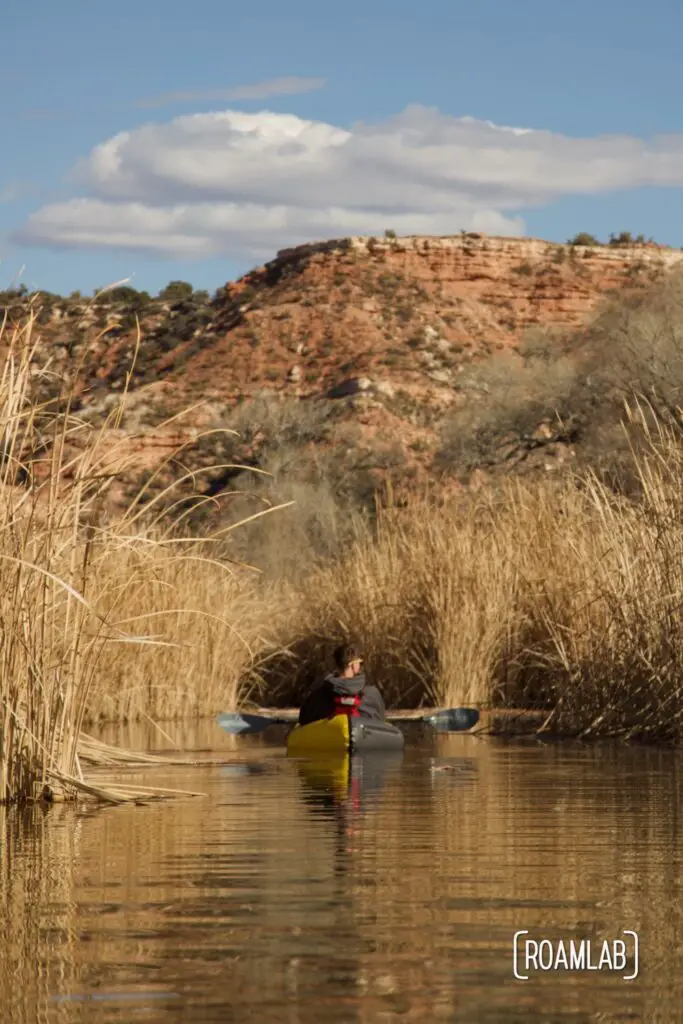
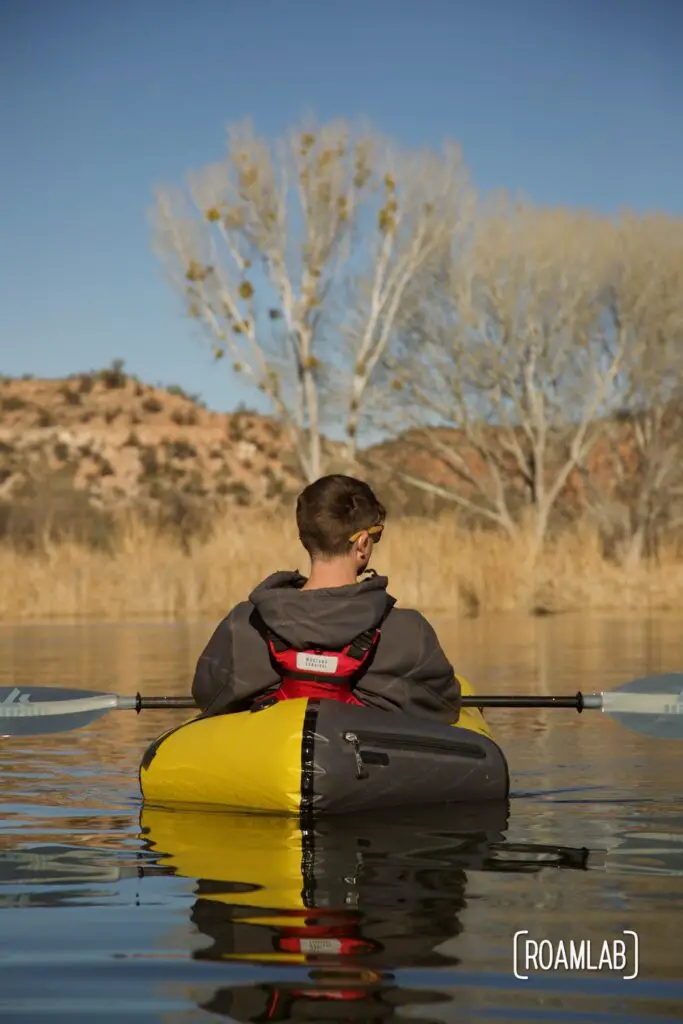
Our Experience
Dead Horse Ranch State Park is not a paddling destination on its own. The three ponds inside the park are small and surrounded by walking paths and people fishing. But in the wake of torrential downpours that have the Verde River and Oak Creek dangerously high, we take our paddling options where we could get them. And for all the park’s shortcomings regarding paddling options, the views were fantastic. Along with mazes of reeds and red rock cliffs, we spot a blue heron fishing along the bank.
This paddle also constitutes our first experiment with transporting the gear by bicycle. We strap our deflated rafts to the bike’s rack, fill a backpack with our paddles and smaller gear, and wear our life vests as we peddle to our paddle point. In the cool weather, the life vests are a welcome extra layer of insulation though we may want to get more creative with transporting our vests in warmer days to come. Our main shortcoming is the bikes themselves. They are commuter-style folding bikes that limit our mobility. I look forward to extended paddling adventures once we get our hands on some folding mountain bikes.
Overall, Dead Horse Ranch State Park scratched our paddling itch while tantalizing us with views of the Verde and possible paddling adventures to come in the future.
